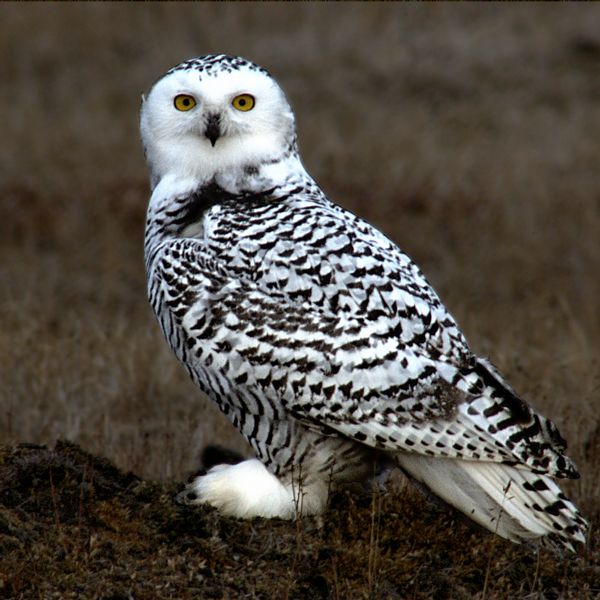The big owl size is a captivating topic that draws the attention of wildlife enthusiasts and bird watchers alike. Owls are not just symbols of wisdom; they are also among the most intriguing creatures in the avian world. With their distinct features and fascinating behaviors, these birds have captured the imagination of many. In this article, we will delve deep into the various aspects of big owls, exploring their size, habitat, behavior, and much more.
As we explore the world of owls, we will focus on the larger species that dominate the skies. The keyword "big owl size" will guide our discussion, allowing us to uncover essential information about these majestic birds. From their unique physical characteristics to their ecological importance, we aim to provide a comprehensive overview that is both informative and engaging.
Whether you are an avid bird watcher, a nature lover, or simply someone curious about owls, this article will serve as a valuable resource. Get ready to discover the grandeur of big owls and learn why they are such fascinating creatures in the bird kingdom.
Table of Contents
- Big Owl Species Overview
- Physical Characteristics of Big Owls
- Habitat of Large Owls
- Behavior and Hunting Techniques
- Conservation Status of Big Owls
- Interesting Facts About Big Owls
- Biodata of Notable Big Owl Species
- Conclusion
Big Owl Species Overview
Owls belong to the order Strigiformes and can be classified into two families: Strigidae (true owls) and Tytonidae (barn owls). Among these, several species stand out for their impressive size. Here are some notable big owl species:
- Great Horned Owl: One of the most widespread owls in the Americas.
- Snowy Owl: Famous for its striking white plumage and association with the Arctic.
- Eurasian Eagle Owl: The largest owl species, known for its impressive wingspan.
- Barred Owl: Recognized for its distinctive hoots and adaptability to various habitats.
Physical Characteristics of Big Owls
The size of an owl can vary significantly among species, but big owls typically share certain physical characteristics. These may include:
- Wingspan: Large owls can have wingspans ranging from 3 to 6 feet.
- Weight: Some big owls can weigh between 2 to 10 pounds.
- Plumage: Their feathers are often patterned for camouflage, helping them blend into their environments.
- Facial Discs: Many large owls possess prominent facial discs that aid in sound localization.
Comparison of Size Among Big Owls
When comparing big owls, the following is a brief overview of their sizes:
| Species | Wingspan (inches) | Weight (pounds) |
|---|---|---|
| Great Horned Owl | 40-60 | 2-5.5 |
| Snowy Owl | 50-60 | 3-6.5 |
| Eurasian Eagle Owl | 59-73 | 4-10 |
| Barred Owl | 38-49 | 1.5-3.5 |
Habitat of Large Owls
Big owls are found in a variety of habitats, depending on the species. Their adaptability allows them to thrive in diverse environments:
- Forests: Many large owls prefer wooded areas where they can hunt and roost.
- Grasslands: Some species, like the Great Horned Owl, can be found in open fields.
- Wetlands: Areas with water bodies are essential for hunting certain prey.
- Urban Areas: Big owls have been known to adapt to city environments, finding shelter in parks and large trees.
Behavior and Hunting Techniques
Owls are primarily nocturnal hunters, employing various techniques to catch their prey. Here are some of their key behaviors:
- Silent Flight: Their specialized feathers allow for noiseless flight, making them stealthy predators.
- Acute Hearing: Owls have excellent hearing, enabling them to locate prey even in complete darkness.
- Camouflage: Their plumage helps them blend into their surroundings while they wait for the right moment to strike.
Prey Selection and Diet
The diet of big owls can vary widely, but they typically feed on:
- Small mammals (e.g., mice, rabbits)
- Birds
- Reptiles
- Insects
Conservation Status of Big Owls
While many big owls are widespread, some species face threats that impact their population. Conservation efforts are essential to protect these magnificent birds:
- Habitat Loss: Urbanization and deforestation have reduced suitable habitats.
- Pollution: Pesticides and other chemicals can harm owl populations.
- Climate Change: Changing weather patterns affect their prey availability.
Organizations and wildlife conservationists are working diligently to address these issues and ensure the survival of big owls.
Interesting Facts About Big Owls
Here are some intriguing facts that highlight the uniqueness of big owls:
- Owls can rotate their heads up to 270 degrees.
- They have a third eyelid that helps protect their eyes.
- Most owls are monogamous and mate for life.
- Owls regurgitate pellets containing undigested parts of their prey.
Biodata of Notable Big Owl Species
Here’s a brief biodata table of some prominent big owl species:
| Species | Scientific Name | Distribution | Size | Diet |
|---|---|---|---|---|
| Great Horned Owl | Bubo virginianus | North America | 18-25 inches | Small mammals, birds |
| Snowy Owl | Bubo scandiacus | Arctic regions | 20-28 inches | Rodents, birds |
| Eurasian Eagle Owl | Bubo bubo | Eurasia | 22-28 inches | Rabbits, birds |
| Barred Owl | Strix varia | North America | 16-24 inches | Rodents, birds |
Conclusion
In conclusion, the big owl size encompasses a variety of species, each with its unique characteristics and adaptations. From their impressive
Article Recommendations
- Ne Yo
- Bryan Hearne
- Madison Beer Nude Leak
- Biltmore Regal Movie Theater
- Hampton Inn Council Bluffs Council Bluffs Ia
- Holland 8 Theater
- How Old Is Adriana Lima 2024
- Pop British Singers
- Business Resilience_0.xml
- Travis Kelce August 2024


